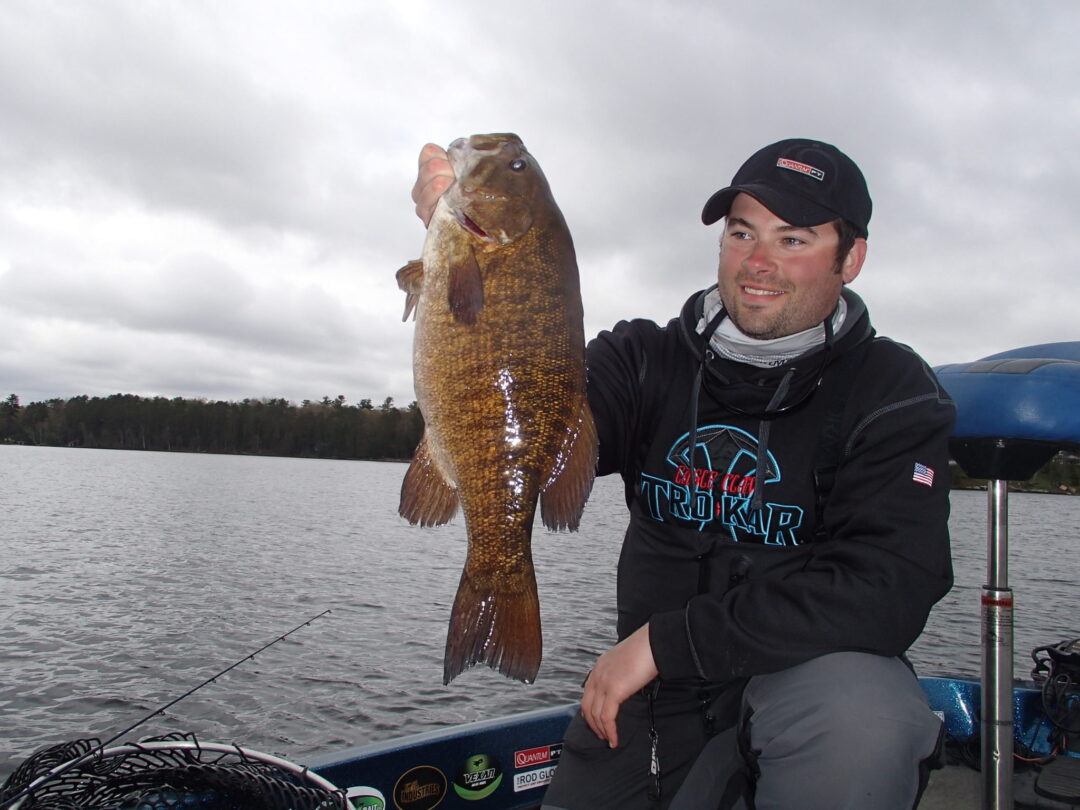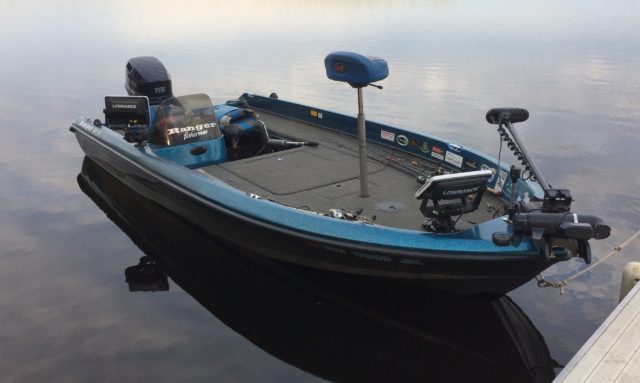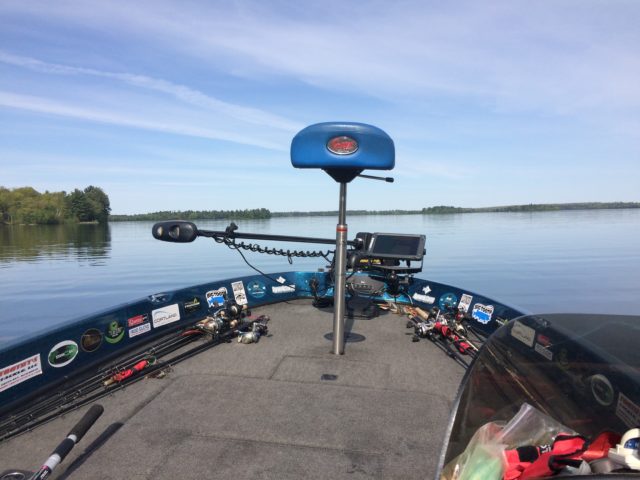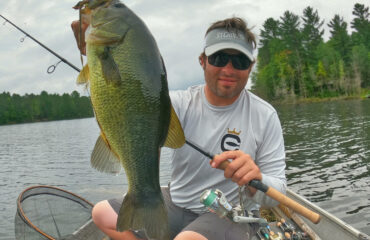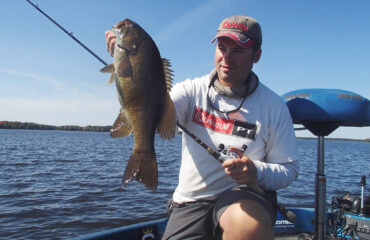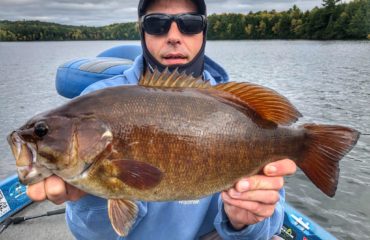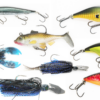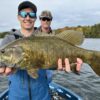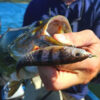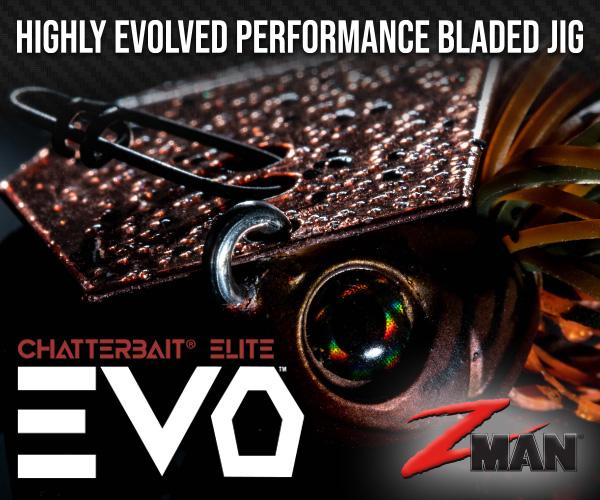Overlooked Bass Fishing Routines for 2018
By Andrew Ragas
Routines are described as detailed courses of action to be followed regularly. In a bass fishing sense, when preparing for your season of fishing, a systemic method of preparation will make you a more efficient fisherman. Over time, it will become second nature to you, and repeated annually.
Bass fishermen are creatures of habit. As we go into 2018 and patiently wait for ice-out on many of our northern lakes, I offer some underutilized tips and fishing routines to help make this year’s bass fishing more productive, efficient, prosperous, and enjoyable.
Check Safety Equipment: Always Wear Your Life Jackets
As our waters become populated and congested with more recreational watercraft, fishermen, and tournaments, the need for more precautions and awareness are becoming greater than ever. In recent months, the bass fishing community has endured accidents that include loss of life. No bass is ever worth danger and these traumatic experiences. As anglers and boat operators we must learn to counter danger, and prepare ourselves and our vessels in order to be safe.
I call on all fishermen and marine operators to prioritize their boat’s safety equipment even further, and reconsider operating procedures if they currently must be improved upon. As a part time fishing guide, I keep a strict checklist of safety equipment on hand, in addition to operating watercraft responsibly.
It’s really easy to fall out from a fishing boat. It’s much easier to fall out from a low platform bass style boat. Regardless of boat type and hull design, accidents can happen aboard any vessel.
On-board I keep up to 3 flotation vests for guests. I also wear my automatic inflatable, connected to kill switch while driving the boat at all times. I want children under age-14 to wear a PFD at all times. I encourage each of my guests to wear a PFD during navigation as we travel 25-30mph across the lake. I’d also like for everyone to wear a PFD especially when excessive wind, waves, and weather impairs the boat’s navigation.
Besides prioritizing PFD’s and responsible navigation, I also keep a throwable that often serves as a seat cushion. It gets used on every guide trip. I think this piece is already well-accessible and ready-to-use in case of emergency.
I also keep a whistle on board, and a blow horn. Both are loud, so if I don’t have access to phone service for someone to bail me out when stranded, there is a good chance I will be heard with either one of these from a far distance away. It wouldn’t hurt to have flares either. First aid kit is in storage, and a charged fire extinguisher is mounted beneath console. I keep spare ropes too for towing, launching, and in case of emergency.
I feel not enough fishing tournaments and guide services, and recreational anglers truly prioritize safety enough through action and instinct. We can go beyond licensing, boating courses, certification & accreditation, and marine products for this. It all starts with taking action, training yourself, preparation, and applying common sense to your daily routine. Never fish when weather turns to extreme, and navigation becomes downright dangerous. Help better educate fellow boaters however necessary.
If you feel you’re cutting corners on safety equipment and your skills in operating a boat, I urge you to make a strong personal effort to improve upon these major boating necessities in 2018.
Swap Your Treble Hooks
Some tackle manufacturers invest more than others in their hardware, but taking a lure directly from the box to the water is often a poor decision.
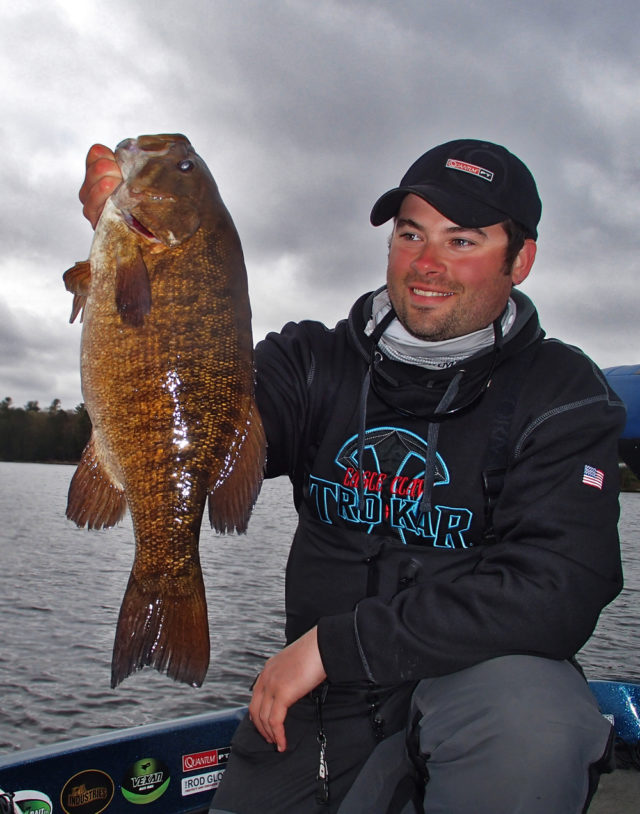
Swapping out dull or low quality factory treble hooks in favor if premium top of the line replacements for your favorite crankbaits and jerkbaits is an easy modification that takes seconds to do. Most bass fishermen continue to ignore the practice, and as a result miss fish. Catching this spring trophy was made possible by replacing my jerkbait’s cheap factory hooks for Trokar TK300 treble hooks.
Don’t be the guy who fishes with cheap, crappy hooks and pouts after heart break of losing a big bass. A simple swap of your crankbait’s dull factory hooks in favor of a superior replacement will bolster your lure’s performance in many regards. Additionally, it will greatly improve your hook-up percentage.
As soon as they’re opened from the package, I replace the treble hooks on my crankbaits, jerkbaits, and topwaters. These last several years, I’ve been using Trokar’s TK300 series treble hooks, and Wide Gap 3X Treble Hooks.
By not swapping hooks, anglers might run into a few problems such as these:
On crankbaits, the more we deflect and bang them off rocks and bottom, treble hooks tend to quickly dull and become worn out. These hooks eventually lose their hook points and barbs, leading to poor hook-ups.
Meanwhile on suspending jerkbaits, hooks may be improperly sized and prone to bending, which doesn’t play well into favor for the powerful strikes from smallmouths. Without affecting its intended purposes and action too much, I always like to go 1 size larger than the original factory hooks to increase its rate of depth. A slightly larger hook will also pin more smallmouths too.
The treble hooks that come on topwaters often might be too small and undersized. When striking, bass could completely miss them. I want my replacement hooks to be as exposed as possible, and as large as I can get away with, without impairing its flotation and action, so then when a fish explodes odds of hooking up explode too.
Swapping hooks on hard baits is easy and takes only seconds to do. This simple procedure will result in more catching and less heartbreak.
Battery Care
Marine batteries are one of the most overlooked, under-maintained, and abused pieces of equipment on our boats. Our boat’s operating power sources encompass at least a starter battery and a set of trolling motor batteries. As remote controlled trolling motors are becoming more popular in bass fishing, coin cell lithium ion batteries for our trolling motor’s wireless remote controls even require proper storage and care too.
Dead batteries will cut short a fishing trip, and nothing annoys me more than this minor inconvenience. Not enough anglers prioritize off-season battery care and maintenance. As soon as your boat gets winterized, I encourage you to properly store and maintain your batteries so they may be reusable and problem free the next season.
I won’t elaborate on what makes batteries go dead, or drains them. Long story short, lack of maintenance and upkeep causes it.
Whether your battery remains in your boat or you pull it for the winter, proper voltage maintenance will be a key in long-term battery health and performance. Keeping batteries properly-maintained and fully-charged all year round will greatly increase performance and lifespan. A typical set of 24V trolling motor batteries, and outboard starter battery, should last up to 3 seasons of hard usage.
At the end of every fall season, I disconnect my boat’s trolling motor batteries (preferably at full charge) and store them on shelving units in a temperature-controlled environment. This will help ensure their maximum longevity and peak power. Until they will be used again in spring, they are charged once per month by either trickle charging or connecting to an automatic portable charging station. Meanwhile, I keep my starter battery in the boat year-round. While it will also get trickle charged monthly, the only difference here is I disconnect all other wires from the terminals except for the outboard battery cables. You never know when the outboard might need to be tilted or trimmed, or might get some maintenance work done.
As our trolling motors evolve into wireless, remote controlled units, the lithium ion coin cell batteries in remotes also need offseason care and storage too. Cold temperatures simply drain our I-Pilot and Co-Pilot remote batteries at rapid pace. In addition, these batteries tend to accumulate oxidation and rust, which can ultimately wreck the waterproof remote. At the end of every fall season I remove the battery, and store my batteries and remote indoors. This simple procedure will assure you of a working remote control and wireless trolling motor the following spring.
Electronics Interpretation, Maintenance and Updating
I’ve always had a unique interest and fascination for mapping and cartography that includes interpreting my lakes paper maps, or labeling hot spots of my own. When it comes to marine electronics, its remarkable how most bass anglers still aren’t reading their units properly or updating them!
I run a combination of Navionics HotMaps Platinum and Lowrance Lake Insight HD charts for my Lowrance units. On every lake I fish, these are my #1 essential tools in helping me locate potential fish holding spots, running their course, and maintaining boat position. Like operating a desktop computer, the power of our marine electronics is infinite nowadays, and I keep learning new things with my units almost daily.
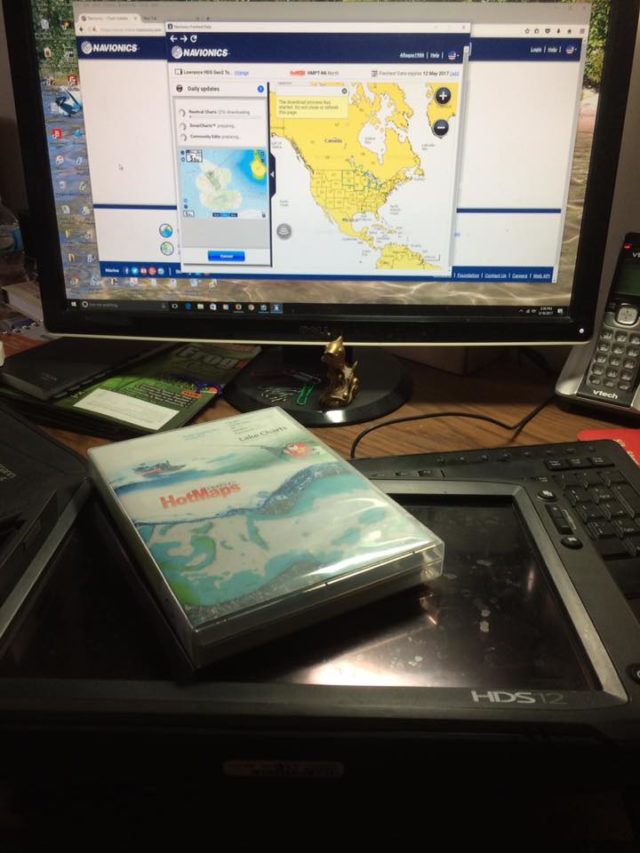
Map study and maintaining your electronics is a great way to utilize time during winter off season. During my off season I browse Navionics desktop application maps for boating and fishing in order to further study my lake’s topography, and contours. I also update my units whenever their latest software updates are issued.
During the winter off-season, I keep my Navionics HotMaps Platinum chips updated. Despite the arms race of new units released annually, marine manufacturers also incorporate the ability to update nearly all multi-function displays using their proprietary software versions on specific units. These software updates allow us to fix bugs and glitches in prior operating software, and give us the ability to add new features and functionality to them. Updating your fish locator with the latest software updates and updating through an SD or micro-SD card is economical, practical, and usually costs nothing but some time to do. From here, the performance, detail, and functionality of your fish locator has improved over the previous version you had been using.
I also utilize desktop mapping applications as well, frequently using Navionics WebApp. During the offseason I browse maps for boating and fishing in order to further study my lake’s topography, and contours. This app helps me to better learn my lakes, understand the locations I’m fishing and why I should fish them, and identify key bass locations I am going to fish spring thru fall so I’m well prepared prior for my outing.
Map and chart reading, and having the ability to identify potential spots and differentiating contour lines, is an essential tool in furthering your bass fishing game. Map reading skills are ultimately acquired and enhanced through time on the water and user-experience during fishing and boat navigation. Maintaining your units and GPS chips will maximize their longevity and working potential.
Configuring Your Boat for Optimal Fishing
One of the most revealing things about a fisherman and his angling style is his boat and how it’s been organized and configured for fishing.
Organizing my boat and gear is important to optimize time on the water and to fish more efficiently. The most important thing is to know exactly where everything is stored at, from jigs and terminal tackle, plastics and cranks, spools of fluoro, catch and release tools, rods and reels, and marine safety equipment. I’m picky and maintain organized standards, and each year I stay consistent with the way that I organize the boat, rig up my rods on deck, and prepare for the next day of fishing. I make sure to organize and prepare my boat’s storage compartments during my downtime in April, since Wisconsin’s gamefish season doesn’t open again until the next month.
The biggest turnoff a fishing guide could do to potential customers is being messy and cluttered, with crap scattered all over the place, not having pride in the work-space and lack of organization. I don’t blame anyone for not hiring that guy. I’ve fished with some messy folks who are like that, and it degraded my fishing experience. Keeping your boat clean is like personal hygiene. A clean, well maintained fishing boat will reward you with a most effective fishing platform, and result in an improved fishing experience.
Each compartment in my boat is packed with a specific purpose in mind. Throughout the season things will get out-of-place, but every so often I’ll revamp and make sure things are organized where they should be.
My two front main compartments, below front deck extension and starboard side, are filled with Plano utility boxes and soft tackle bags loaded with lures, soft plastics, and other terminal tackle. They are organized by lure type and category. I also keep a few small boxes of spinnerbaits, spare spools of line, and other components and accessories. Beneath the deck extension storage, I also keep a few gallons of Amsoil HP marine oil, boat bumpers, and spare life jackets in a dry bag.
Port-side storage then is used as a rod locker. I keep up to 25 rods in the boat, and what’s not on deck and left unused are wrapped in Rod Gloves, protected. This allows me to keep a lot of rods and reels in storage, free of tangles and mess.
The rear starboard compartment then is used as dry-storage for clothing, weather suit, or can be used as my boat’s cooler with ice for the day’s drinks and food.
What I’m getting at with this post is not bragging about my boat’s layout, cleanliness and organizational tidiness. Use your boat’s layout and storage to its fullest potential like I have done for mine. Customize your layouts and storage space according to your needs, requirements, and preferred style of fishing. Be efficient with your angling and time spent on the water. Stay consistent in how storage is utilized annually, so you may easily remember the compartment or storage box your favorite lures are being kept at.
Still searching for a belated New Years resolution? Consider starting a few offseason fishing routines that can be followed annually. These underutilized routines and tips will help enhance your bass fishing productivity in 2018.


